I’ve been a fluff addict since I started cloth diapering my first baby five years ago. We’re on our second baby now, and I still love reading about and trying out new diapers. As part of my quest to spread the fluffy love, I’ve put together a list of some commonly used cloth diaper terms as well as a list of cloth diapering resources that I found useful back at the beginning of my cloth diapering journey and still use today. If you’re new to cloth or just wondering about this cloth diapering thing, I hope you’ll find this info helpful.
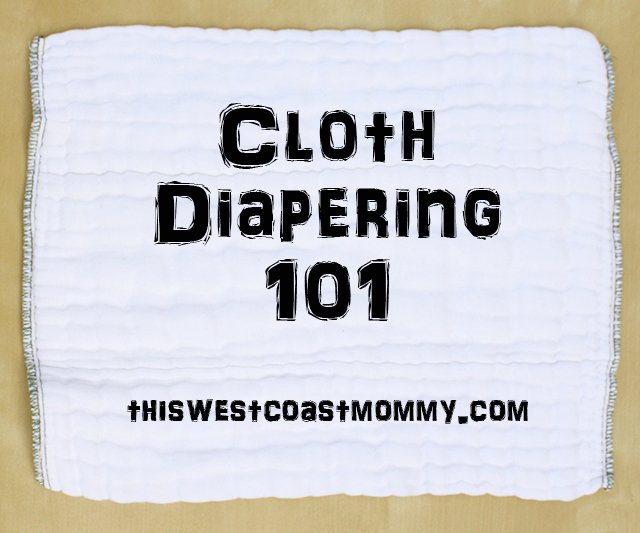
Wondering how a particular diaper performs? Find all my CLOTH DIAPER REVIEWS here.
Or if you’re curious about how long a diaper will last, check out my LONG-TERM DIAPER REVIEWS.
You might also find my 6 WAYS TO FOLD A PREFOLD tutorial useful.
Check out my list of 9 COMMON CLOTH DIAPERING MISTAKES and how to avoid them.
Overwhelmed with all the choices out there? Here’s some info to help you decide WHICH CLOTH DIAPER INSERTS, DOUBLERS, OR LINERS SHOULD YOU CHOOSE.
Check out my Cloth Diapering board on Pinterest for more helpful info!
Common Cloth Diapering Terms
AIO – All in One – A style of diaper that is just what it sounds like. The waterproof outside layer and absorbent inside layer are sewn together all in one piece. This style is most similar to a disposable diaper. (Examples: bumGenius Freetime AIO Diapers, Smart Bottoms 3.1 One Size Diapers)
AI2 – All in Two – A style of diaper where the waterproof outside layer and the absorbent inside layer are separate pieces. The absorbent layer may be snapped in or simply laid in the outside shell. (Examples: gDiapers, SoftBums Echo Diapers)
Aplix – A brand of hook and loop fastening tape.
Booster – A second insert added to a diaper to boost absorbency. Also called a doubler.
Cover – A waterproof layer wrapped over a fitted, prefold, or flat diaper, and usually fastened with snaps or hook and loop tape. (Examples: Flip Diaper Covers, Bummis Super Brite Wraps)
Doubler – A second insert added to a diaper to boost absorbency. Also called a booster.
DSQ – Diaper Service Quality – Term used for prefold diapers to denote high-quality, long-wearing prefolds, suitable to withstand the wear and tear of frequent use and washing as would be found in a diaper service company.
Flat Diaper – Large square of one layer of fabric, usually cotton, that must be folded for use. This is the traditional or “old-fashioned” cloth diaper. Requires a cover to be waterproof.
Fitted Diaper – A style of diaper that is contoured to fit baby like a disposable diaper with elastic around the legs and back. Usually made from cotton, hemp, or bamboo. Often secured with snaps or hook and loop, but some may require pins or another fastener. Requires a cover to be waterproof. (Examples: Mother-ease One Size Fitted Diapers, Omaïki Ö Sleep Fitted Diapers)
Hook and Loop – Generic name for Velcro or Aplix.
Hybrid – A type of AI2 diaper consisting of a waterproof outside layer and a disposable absorbent layer. (Example: Grovia shells with disposable Bio-Soaker Pads).
Hybrid Fitted – A fitted diaper made with a hidden layer of fleece inside to increase water-resistance. Requires a cover to be fully waterproof. (Example: Nic and Elli Hybrid Fitted Diapers, Sar n’dippa Dee Hybrid Fitted Diapers)
Insert – Absorbent cloth pad placed inside a diaper. Often made from microfiber, sometimes cotton, hemp, or bamboo. Learn more about inserts here.
Liner – Thin layer of cellulose or fabric used to protect the inside of a diaper from poop. Liners may be disposable or reusable. (Examples: Bummis Bio-Soft Flushable Diaper Liners, Bummis Reusable Fleece Liners)
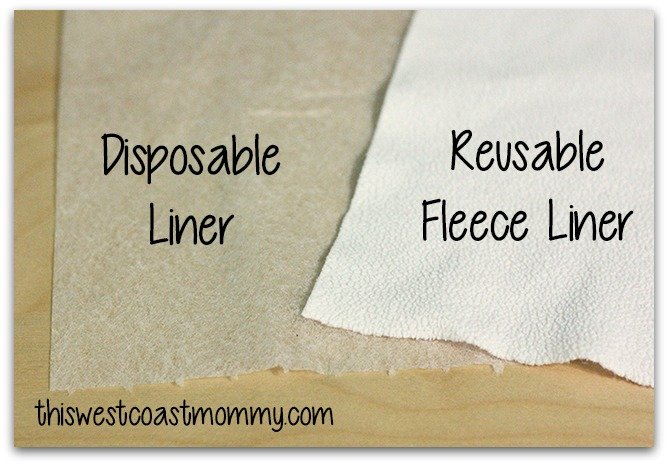
Cloth diaper liners come in disposable and reusable versions.
Longies – A soaker with long legs like a pair of pants, worn over a fitted, prefold, or flat diaper to prevent leaking.
OS – One Size – A style of diaper made to fit a wide range of sizes, typically using snaps or adjustable elastic to adjust the size. (Examples: Funky Fluff 2.0 Bamboo Diapers, Nuggles Simplee Hybrid Diaper)
Pocket Diaper – A style of diaper consisting of a waterproof cover with an opening inside in which users can put inserts to customize absorbency. (Examples: Sunbaby 4.0 Pocket Diaper, Rumparooz One Size Pocket Diaper, Ella Bella Ella’ssential Pocket Diapers)
Prefold Diaper – A style of diaper consisting of multiple layers of cotton or hemp sewn into a rectangle with the most layers placed in the middle. Requires a cover to be waterproof. (Examples: Bummis Organic Cotton Prefolds, Geffen Baby Hemp Prefolds)
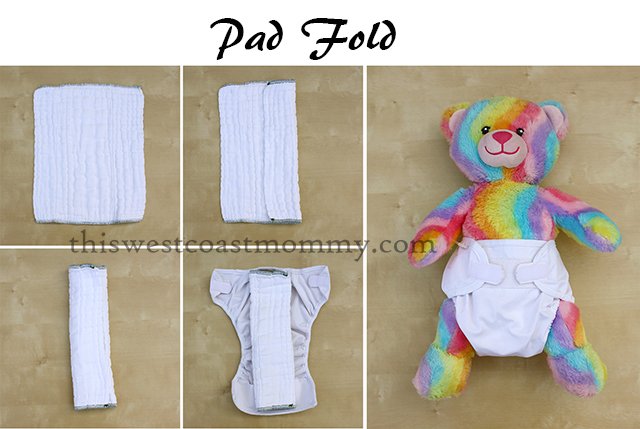
This is the simplest way of using a prefold diaper.
PUL – Polyurethane Laminate – A compound material made by laminating polyurethane film to cloth fabric using chemical solvents. This waterproof fabric is used in covers, AIOs, AI2s, AI3s, and pocket diapers.
Sized – A style of diaper made to fit a specific size (e.g., small, medium, large). Users will need more than one size as baby grows. (Examples: AppleCheeks Envelope Covers, FuzziBunz Perfect Size Diapers)
Snappi – An alternative to safety pins for fastening flat, prefold, and some fitted diapers.
Soaker – A type of diaper cover usually made from wool or fleece (both fabrics are water resistant) that pull up over a flat, prefold, or fitted diaper. Soakers with long legs are called longies, soakers with short legs are shorties. (Examples: Disana Organic Wool Diaper Cover, sustainablebabyish Knit Wool Longies)
Shorties – A soaker with short legs worn over a flat, prefold, or fitted diaper to prevent leaking.
TPU – Thermoplastic Polyurethane – Similar to PUL, this waterproof fabric is made by laminating polyurethane film to cloth fabric using a heat bonding process.
WAHM – Work at Home Mom – Term identifying a diaper as handmade by a mother sewing from her home. Not manufactured in a factory.
Wrap – Another term for a diaper cover.
More Cloth Diaper Resources
Diaper Pin: Diaper Pin is one of the oldest cloth diaper sites out there. Launched in May 2000, this is my go to site for diaper reviews. They also have reviews for sellers, forums, and a large buy/sale/trade board.
Padded Tush Stats: Tara at Padded Tush Stats collects reader reviews of individual diapers and analyzes the data according to factors like fit and absorbency, and by user characteristics like chubby or skinny legs, rash-prone, or heavy wetter.
If you have any other cloth diapering terms, abbreviations, or resources you’d like to see added, please leave me a note in the comments!
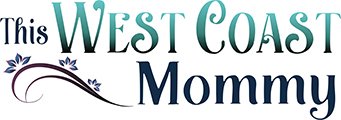

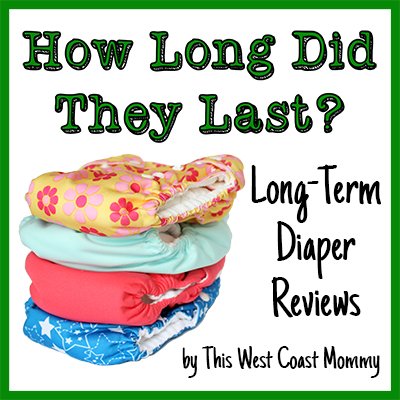
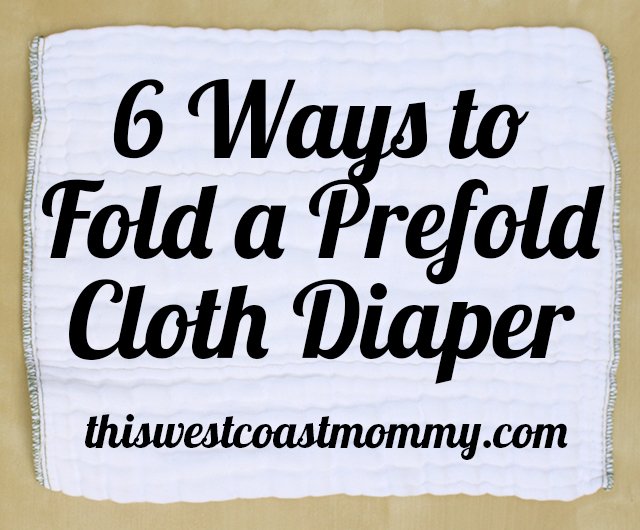
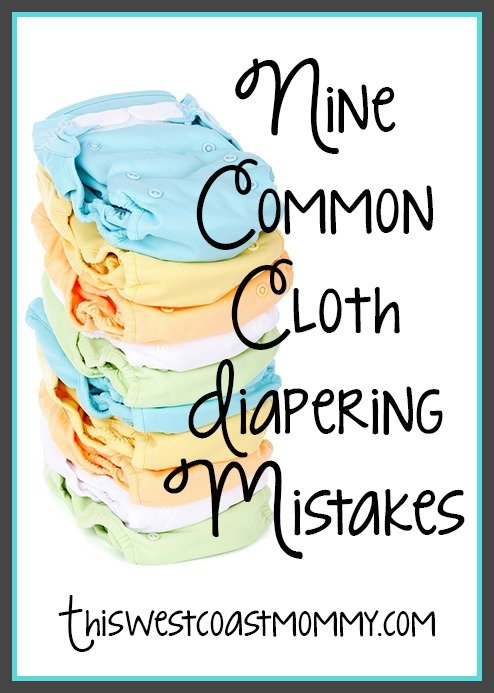
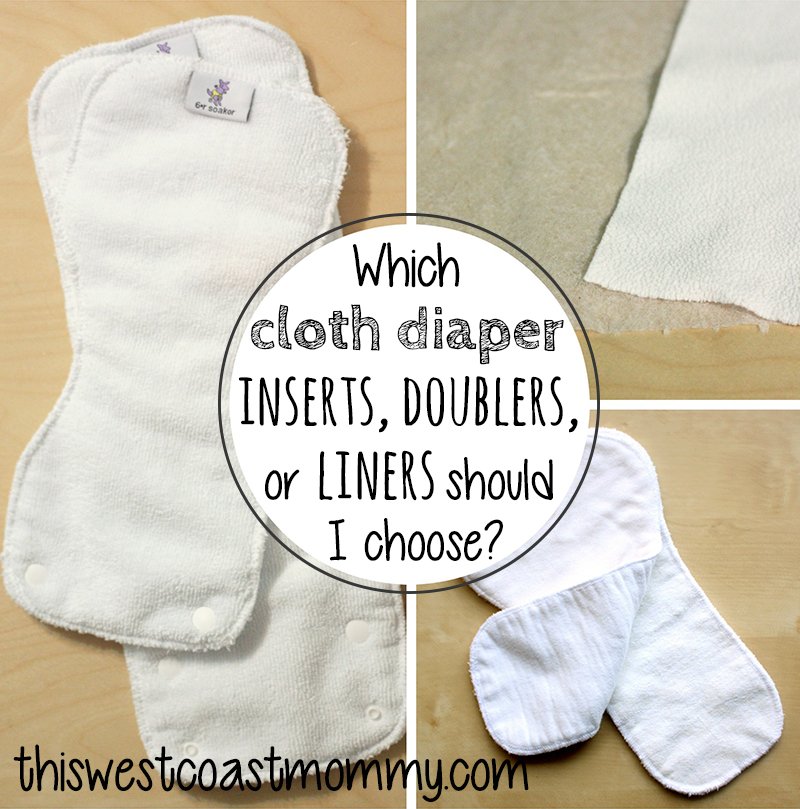
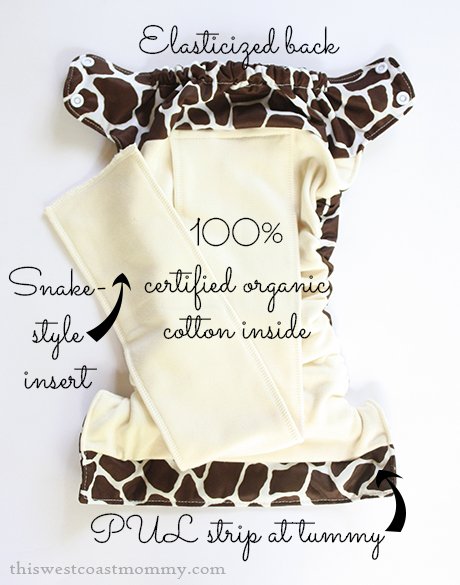
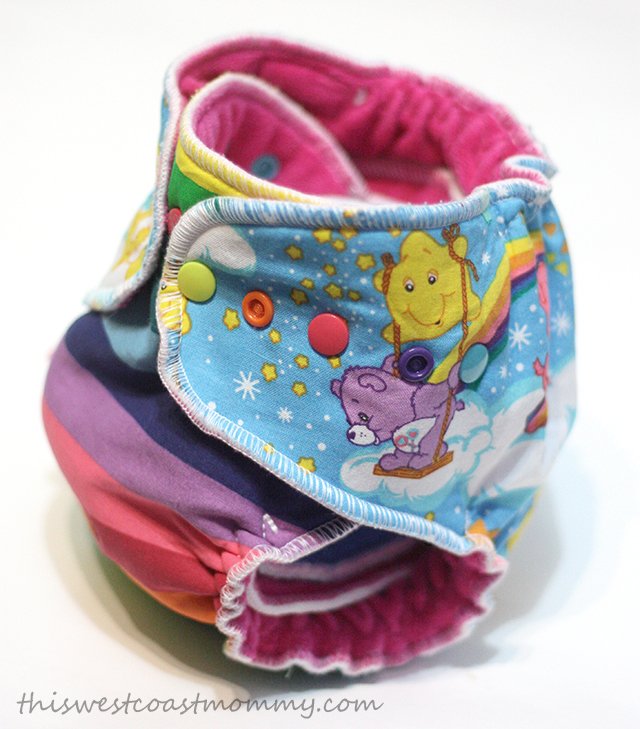
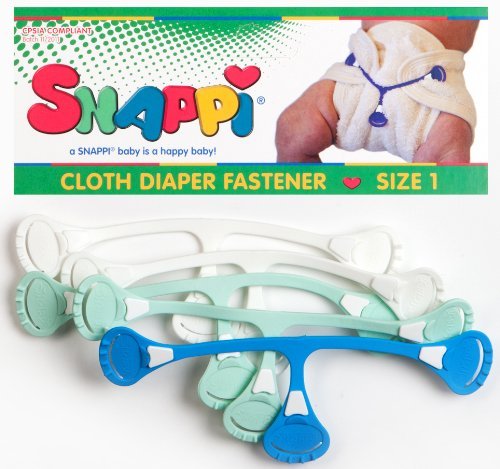
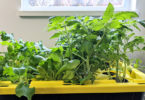
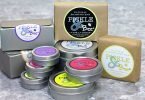

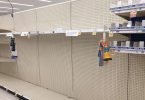

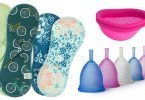
Thanks for all the lingo on diapers
I have to give credit to you mom who stuck with cloth diapers!! I was one of the many moms who took the easy way out. Great Job for the environment.
We are new to cloth diapering and sometimes I have no idea what they are talking about. Thank you for the help.
I would love to start cloth diapering
Lots of great info… thanks!
I love cloth diapers so much! AIOs are the best!
THANK YOU for this post! So helpful to see all the abbreviations and check out the resourses. I am new to cloth diapering and this is very helpful!
I loved having all the terms together. I am starting my cloth diapering in just 2 months with my first little one comes:)
Thanks for the explaining the CD terms, so much to learn!
This is a great resource! Thanks for putting it together.
GREAT post!!! I’m going to print this out for my daughter!!!
I am just getting used to all the texting lingo that my family uses (they had to show me cuz I don’t have a cell phone). Now there is cloth diapering lingo? I’m really getting confused! I just remember using the baby went #1 OR #2.
Im new to cloth diapers, thank you for all the “lingo”!
I’m kinda new to the cloth diapering, although I’ve been considering it for quite a while. this page is helpful to refer to when I get confused with all the lingo! So I pinned it to my pintrest board. Thanks!
This super helpful! I’ve been using cloth for a few months now on my 2 year old and plan to when we have a second. There is still much for me to learn.
I LOVE cloth diapering! Everything about it, I’ve became so addicted! At first I went into it to save a little cash, not to mention great for our planet and sooo cute! Too cute, now all extra cash goes towards new diapers 😉 I’m trying to try all kinds, I have tried pockets, AI2, AIO, now I’m trying out prefolds and covers, so far I’m loving it! Not too much extra work, and covers and prefolds are pretty inexpensive, it’s a fantastic way to bulk up your stash! I still feel I have a lot to learn, so thank you for this blog!
I’m not sure how many moms like the idea of a cloth diaper…but, sometimes it is necessary to switch to cloth! When my nephew was born, my sister bought the regular in-store diapers, that most people grab. She then began to notice that my nephew was getting a rash all the time, no matter how much cream was put on. She switched to non-bleached, non- chlorine diapers. And found, that he was allergic to the regular diapers. I’m sure cloth would’ve been the next step, if the natural diapers didn’t work!!!
such a great post for a first time cloth diapering mama such as myself!! Thanks for the info I will probably be back regularly to read up lol
very easily explained, love the photos. i’ve cded my other kiddos, but this will come in geting others on oard or i hope so.
I had three boys and used cloth diapers on every one of them. Just the old plain white ones but they worked. My kids never had diaper rash with these. Today they have such nice colorful diapers. No rubber pants needed with them. I went through so many of those rubber pants too
Great innovation – love the liners. Saves on diapers on the long run
I love this blog post! I link it to many new mamas who are interested in cloth diapering, thank you! (:
Aww, thanks Alexandria! Glad to know you find this helpful enough to share!
Thanks for all the great tips and ressources!! SO useful to someone like me, first time CD and first time Momma !!!!!!! X
Good info
Thank you for this information
Cloth diapers have changed dramatically since my children were young, but the idea is still the same. Comfort for baby and environmentally friendly.
I love cloth diapers and just found out how much I love prefolds
I’ve cloth diapered my girl for all 17 months of her life and I didn’t know some of these terms or that some of these products existed, thanks you I’m going to try some of these diaper options.
Very informative article even for us gift givers! Cloth diapers have come along way baby!
Hi from NZ
I am a mother of 3 who used cloth nappies for all my kids. I soaked them over night in nappy san, washed them in warm water after grating bars of sunlight soap easier to dissolve, (excellent for ultra sensitive skin) and then hung on the clothes line to air out and dry and I didn’t even have an automatic washing machine. I only had a agitator washing machine. For wet days my mother had sewn me up a rain cover made of clear plastic that could be tied to the clothes line so the rain was kept off my nappies, If it was windy they dried fine and I have to admit it did look weird seeing a hills rotary clothes line (circa 1960) wearing a cover but it sure did work fine as I never had a clothes dryer. I only had 36 nappies as that was all you needed in those days. My mother made me nappy covers that were the envy of all my friends out of woollen material with ribbon and lace and elastic around the legs to prevent accidents so they were cute as and kept babies clothes dry,
Yes you could buy disposibles in the 70’s and I put 3 disposables on my first. He got a rash so I didn’t even finish the packet and never used them again
So I thought that using cloth was no big deal until …….. My nephew became a dad.
OMG what was I thinking.
Here I was at the hospital and his wife goes “We are going to buy and use cloth nappies”
Oh I say That’s great it will be so much cheaper and it’s easy as, You should start when you have used up all your newborn disposable nappies ( I just give them 100). Yes they say we will do that we just have to get some.
So I go home and decide to read my email and there it is – A SIGN – The Baby Factory, Cloth Nappies OSFA $5 with 2 inserts. Tomorrow only.
And yes you guessed it I went flying out to buy them some, cause they were saving the planet AND saving money since mummy wasn’t going to be working and i wanted to help them out.
I had know idea that there was different types of nappies and i even rang my sons partner and said I was going to buy some nappies for myself to use on my new granddaughter (8 weeks) when she stayed with me on the weekend and would she like me to get her some? will she use them? ( 200 newborn disposables from me) She replied that would be alright so I brought her 20 and 20 for me. The lady in the shop showed me how to make the nappy small for a newborn and showed me the pocket to stuff the insert in. I didn’t know you did that .Me and another lady were chatting at the counter about how great we caught the special and how to use them as we thought the padding sat on the nappy. Boy Nana’s have a lot to relearn about nappies but I’m sussed on how my ones go together now.LOL
Anyway that is how I got to your page, I was reading an ad for prefolds and you were given as a source to learn about them. I thought they were for stuffing in pocket nappies I hadn’t realised they were nappies on their own. I think that your site is great and I have learned heaps about the different types and I wish I hadn’t rushed out to buy the pocket nappies I did buy but had gone on line to find out more about the different types first. I love your list as I don’t have any idea half the time what people are talking about and now I will. lol I must get some of these prefolds as I did not know the middle was thicker and since my grand daughter is young I will try the jelly roll? with snappy ( I hope we have them in NZ) with a pocket nappy cover? or should I get some other type of cover. I have not read all your blogs yet but so far it has been a pleasure to read and given me some excellent ideas to help me diaper my granddaughter. I have to admit that she is the first girl in the family. I had 3 boys and my sons have 3 boys and now here we are a girl.
Is there anything we should be aware off regarding nappies on a girl? I remember that when I was using nappies I folded them a different way from my friends who all had girls. They used a triangle shaped nappy
Any comment or help would be appreciated
Thank you
Joanne